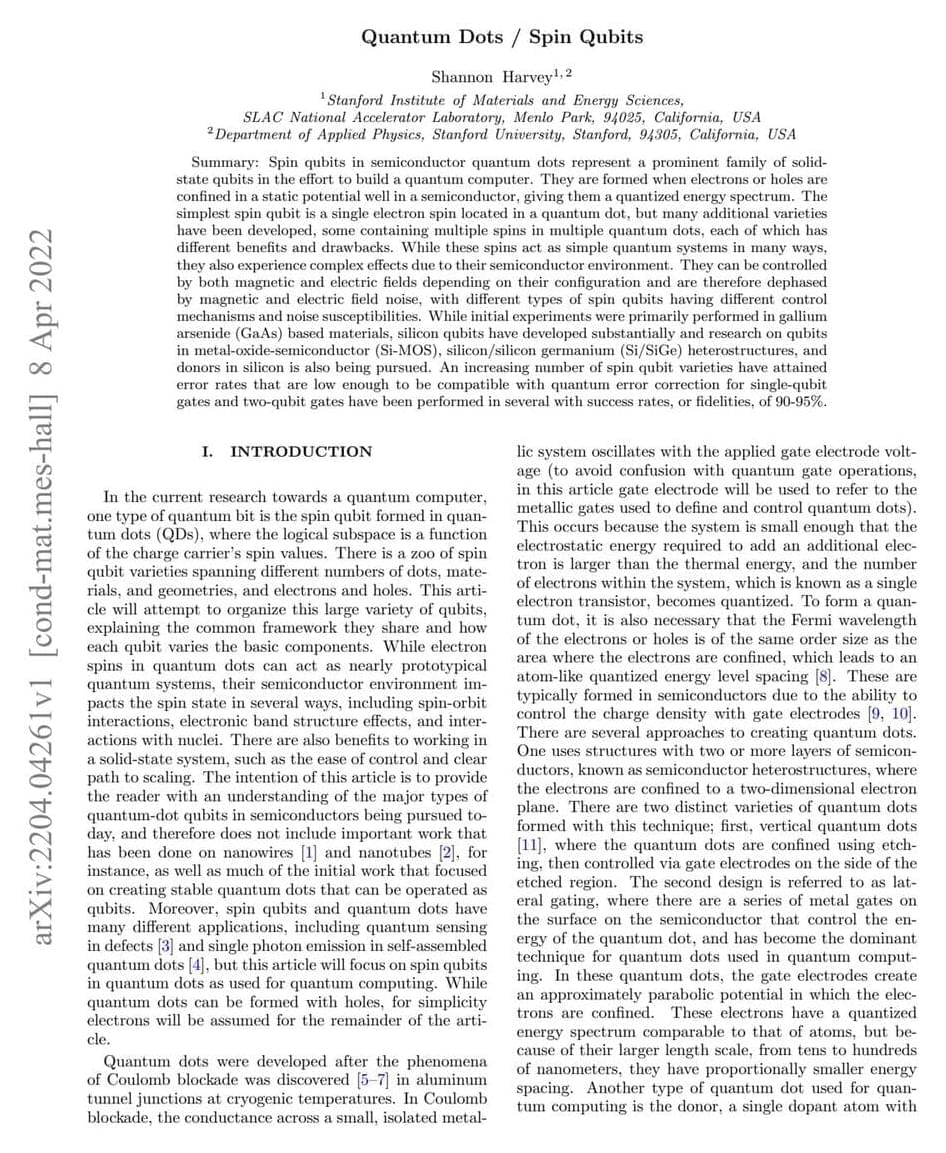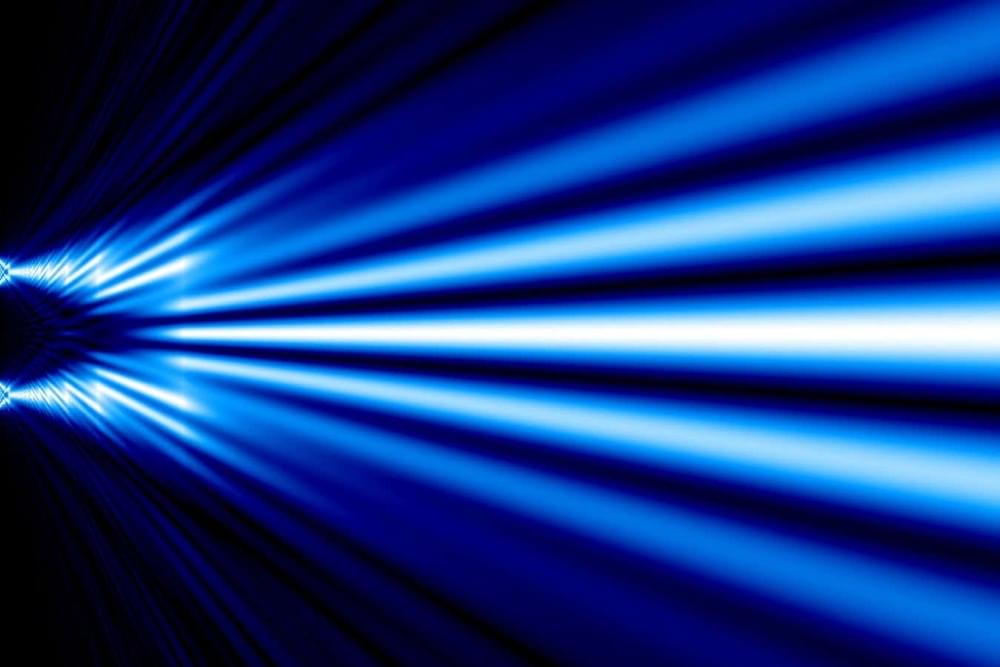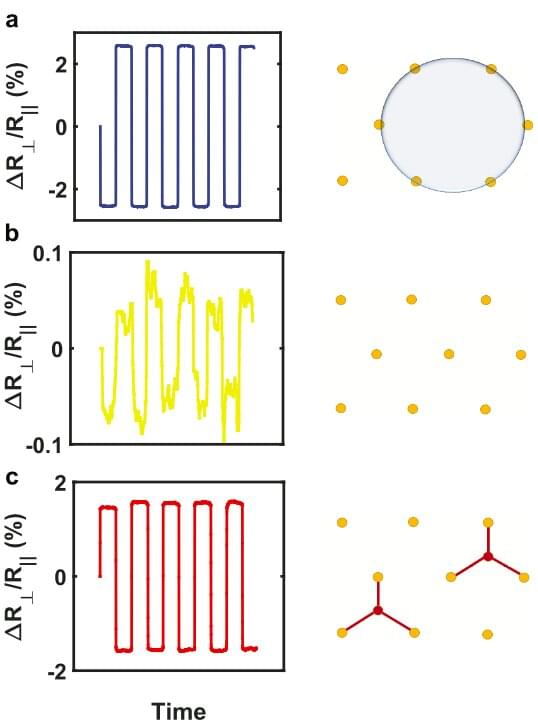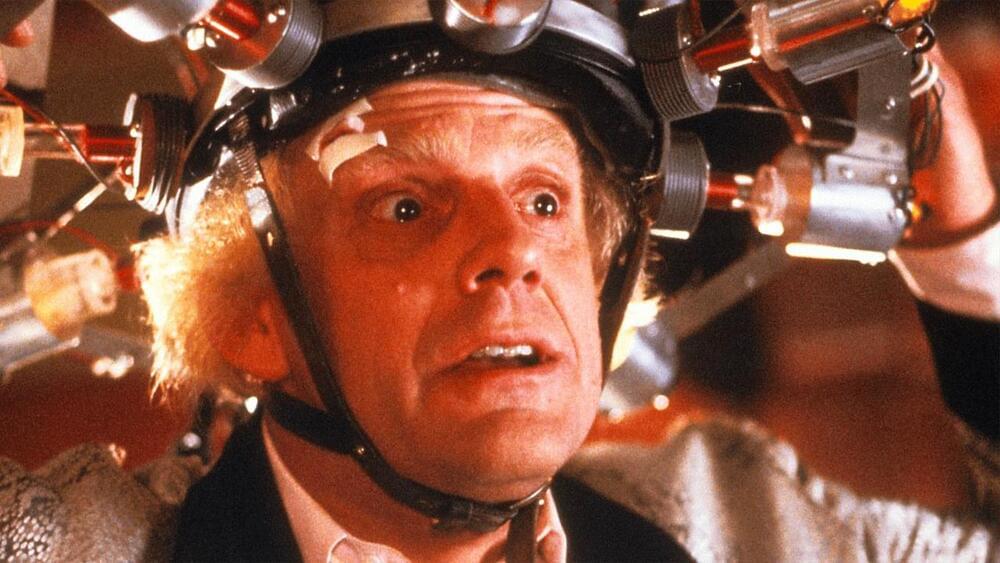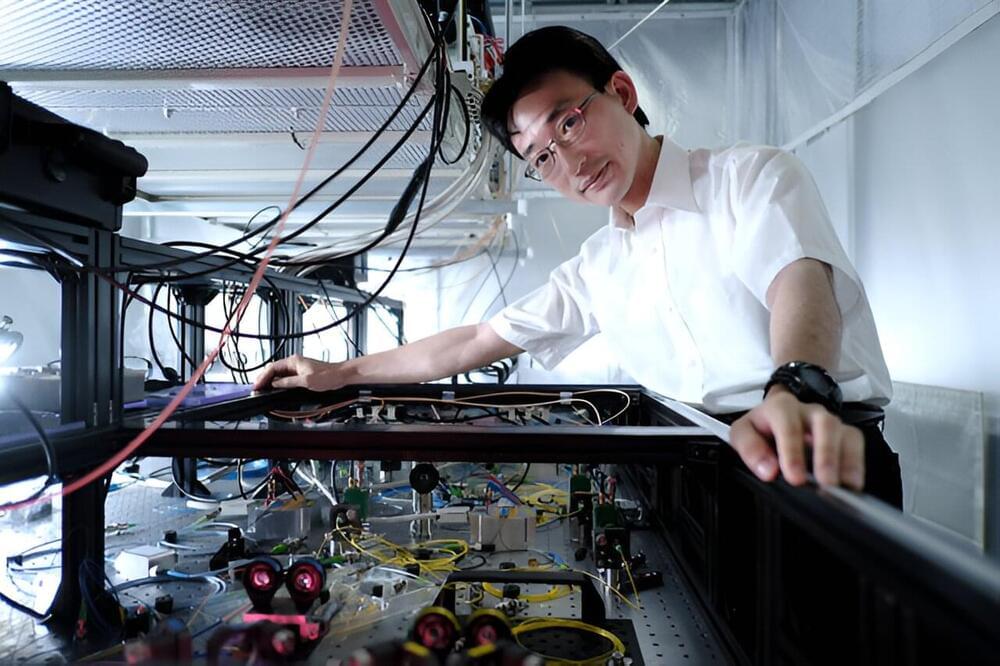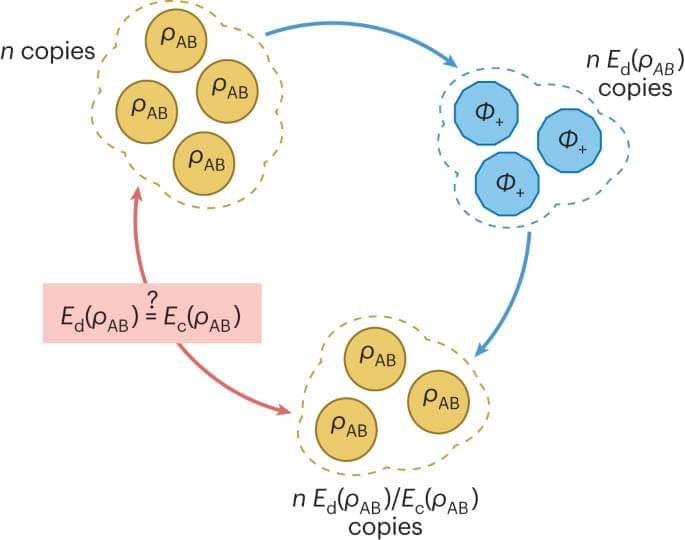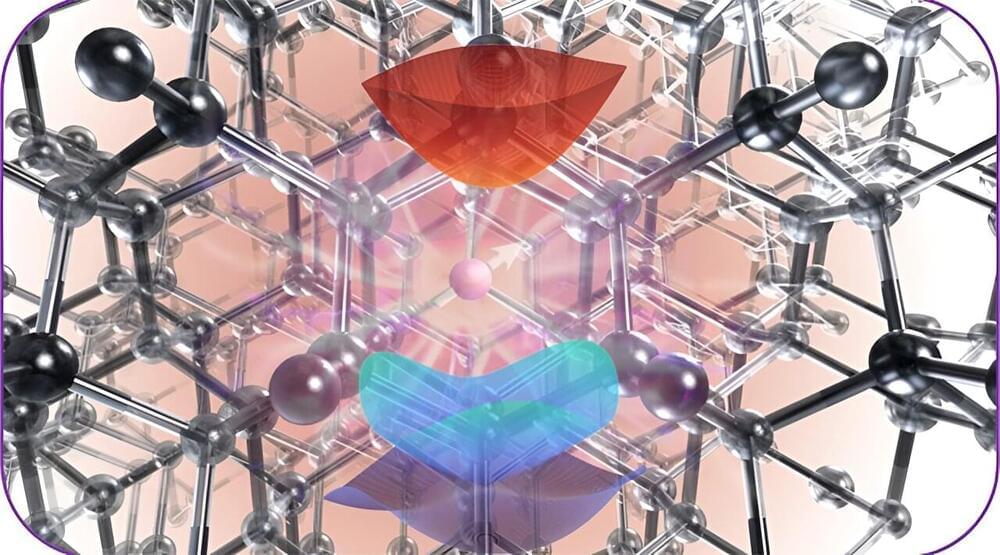Joe McEntee visits the Lawrence Berkeley National Laboratory to learn about QUANT-NET’s plan to create a quantum network tested for distributed quantum computing applications in the US. Joe McEntee visits Lawrence Berkeley National Laboratory (Berkeley Lab) in California to check out progress on the enabling quantum technologies.
Archive for the ‘quantum physics’ category: Page 184
Dec 23, 2023
Famous quantum experiment could be shrunk to the size of a single atom
Posted by Dan Breeden in categories: particle physics, quantum physics
A single, extremely cold atom could play the role of two slits in the classic double-slit experiment from quantum physics, something that was previously thought to be impossible.
Dec 23, 2023
Researchers demonstrate the potential of a new quantum material for creating two spintronic technologies
Posted by Dan Breeden in categories: computing, particle physics, quantum physics
Over the past decade or so, physicists and engineers have been trying to identify new materials that could enable the development of electronic devices that are faster, smaller and more robust. This has become increasingly crucial, as existing technologies are made of materials that are gradually approaching their physical limits.
Antiferromagnetic (AFM) spintronics are devices or components for electronics that couple a flowing current of charge to the ordered spin ‘texture’ of specific materials. In physics, the term spin refers to the intrinsic angular momentum observed in electrons and other particles.
The successful development of AFM spintronics could have very important implications, as it could lead to the creation of devices or components that surpass Moore’s law, a principle first introduced by microchip manufacturer Gordon Earle Moore’s law essentially states that the memory, speed and performance of computers may be expected to double every two years due to the increase in the number of transistors that a microchip can contain.
Dec 23, 2023
Next-gen computing replaces transistors with quantum dots
Posted by Dan Breeden in categories: computing, quantum physics
Scientists are taking an alternative approach to computing, replacing conventional components called transistors with mixed-valence molecules to build quantum-dot cellular automata. [This] is a low-power classical…
Dec 22, 2023
First AI Images Extracted From Human Brain Revealed
Posted by Jose Ruben Rodriguez Fuentes in categories: quantum physics, robotics/AI
A group of researchers in Japan have found yet another interesting way to use AI technology. In a recent research project led by a team from the National Institutes for Quantum Science and Technology (QST) and Osaka University, they were able to translate human brain activity to depict mental images of objects, animals, and landscapes. They released pictures from the research, and the results are pretty astounding.
One of the images that the AI technology was able to decode from the brain activity was a vivid depiction of a leopard with detailed features like spots, ears, and more. Another image depicted an airplane. While we have previously had technology that is able to recreate images from brain activity, this is one of the very few studies that were able to make these mental images visible.
Of these previous studies, the images that could be decoded were fairly limited into several categories, like human faces, letters, and numbers. This new AI brain-decoding technology seems to be able to decode a much broader spectrum of images from the human mind. As the researchers in the study point out, “visualizing mental imagery for arbitrary natural images stands as a significant milestone.”
Dec 22, 2023
Researchers take a different approach with measurement-based quantum computing
Posted by Paul Battista in categories: computing, information science, quantum physics
The race to develop quantum computers has really heated up over the past few years. State-of-the-art systems can now run simple algorithms using dozens of qubits—or quantum bits—which are the building blocks of quantum computers.
Dec 22, 2023
What can my homemade quantum computer do?
Posted by Dan Breeden in categories: computing, quantum physics
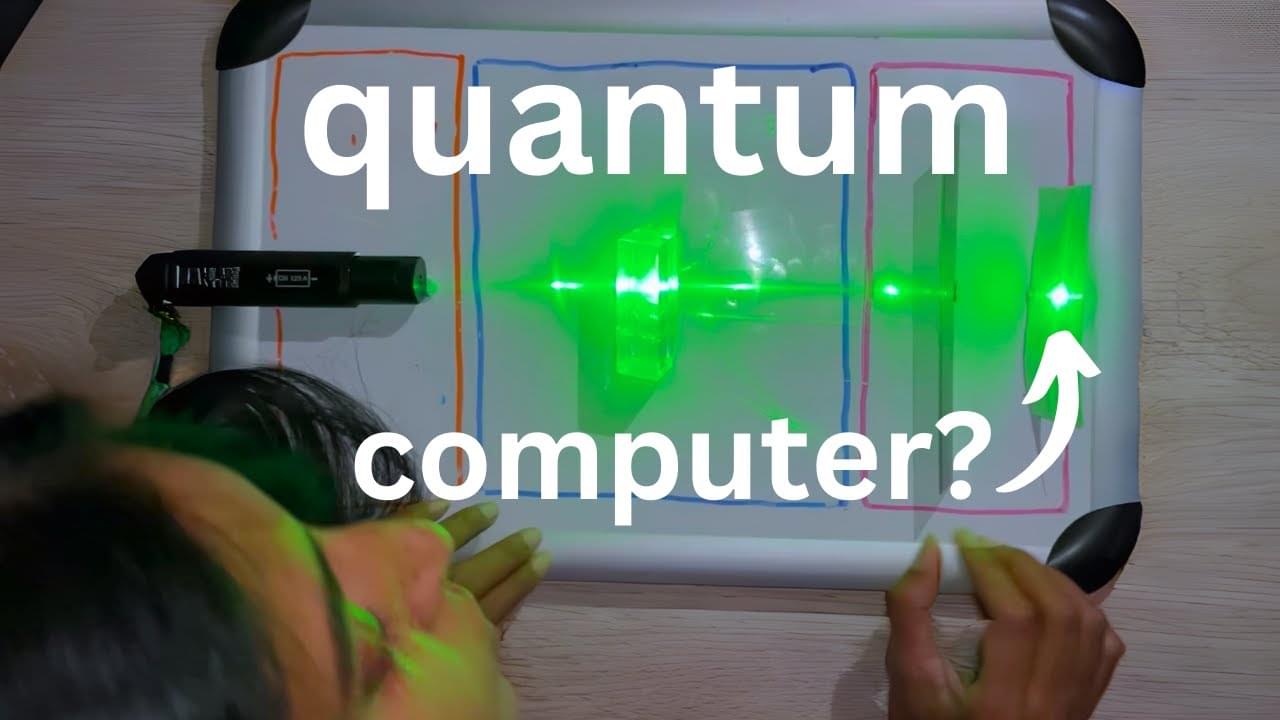
This video was supported by Screen Australia and Google through the Skip Ahead initiative. Part 1 is here: https://youtu.be/muoIG732fQA?si=_vFy9siMqkOdO1xVf y…
Dec 22, 2023
The tangled state of quantum hypothesis testing
Posted by Dan Breeden in category: quantum physics
Quantum hypothesis testing—the task of distinguishing quantum states—enjoys surprisingly deep connections with the theory of entanglement. Recent findings have reopened the biggest questions in hypothesis testing and reversible entanglement manipulation.
Dec 22, 2023
An advanced computational tool for understanding quantum materials
Posted by Dan Breeden in categories: chemistry, computing, engineering, particle physics, quantum physics
Researchers at the University of Chicago’s Pritzker School of Molecular Engineering (PME), Argonne National Laboratory, and the University of Modena and Reggio Emilia have developed a new computational tool to describe how the atoms within quantum materials behave when they absorb and emit light.
The tool will be released as part of the open-source software package WEST, developed within the Midwest Integrated Center for Computational Materials (MICCoM) by a team led by Prof. Marco Govoni, and it helps scientists better understand and engineer new materials for quantum technologies.
“What we’ve done is broaden the ability of scientists to study these materials for quantum technologies,” said Giulia Galli, Liew Family Professor of Molecular Engineering and senior author of the paper, published in Journal of Chemical Theory and Computation. “We can now study systems and properties that were really not accessible, on a large scale, in the past.”
Dec 22, 2023
Quantum battery technology works by breaking causality
Posted by Shailesh Prasad in categories: quantum physics, sustainability
Future batteries could charge up by relying on a quantum effect known as indefinite causal order, whereby the laws of cause and effect are scrambled and power can move through the system quicker.
